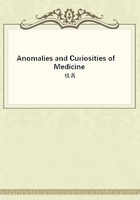
第54章
Birth Through the Abdominal Wall.--Hollerius gives a very peculiar instance in which the abdominal walls gave way from the pressure exerted by the fetus, and the uterus ruptured, allowing the child to be extracted by the hand from the umbilicus; the mother made a speedy recovery. In such cases delivery is usually by means of operative interference (which will be spoken of later), but rarely, as here, spontaneously. Farquharson and Ill both mention rupture of the abdominal parietes during labor.
There have been cases reported in which the recto-vaginal septum has been ruptured, as well as the perineum and the sphincter ani, giving all the appearance of a birth by the anus.
There is an account of a female who had a tumor projecting between the vagina and rectum, which was incised through the intestine, and proved to be a dead child. Saviard reported what he considered a rather unique case, in which the uterus was ruptured by external violence, the fetus being thrown forward into the abdomen and afterward extracted from an umbilical abscess.
Birth of the Fetus Enclosed in the Membranes.--Harvey says that an infant can rest in its membranes several hours after birth without loss of life. Schurig eventrated a pregnant bitch and her puppies lived in their membranes half an hour. Wrisberg cites three observations of infants born closed in their membranes; one lived seven minutes; the other two nine minutes; all breathed when the membranes were cut and air admitted. Willoughby recorded the history of a case which attracted much comment at the time.
It was the birth of twins enclosed in their secundines. The sac was opened and, together with the afterbirth, was laid over some hot coals; there was, however, a happy issue, the children recovering and living. Since Willoughby's time several cases of similar interest have been noticed, one in a woman of forty, who had been married sixteen years, and who had had several pregnancies in her early married life and a recent abortion. Her last pregnancy lasted about twenty-eight or twenty-nine weeks, and terminated, after a short labor, by the expulsion of the ovum entire. The membranes had not been ruptured, and still enclosed the fetus and the liquor amnii. On breaking them, the fetus was seen floating on the waters, alive, and, though very diminutive, was perfectly formed. It continued to live, and a day afterward took the breast and began to cry feebly. At six weeks it weighed 2 pounds 2 ounces, and at ten months, 12 pounds, but was still very weak and ill-nourished. Evans has an instance of a fetus expelled enveloped in its membranes entire and unruptured. The membranes were opaque and preternaturally thickened, and were opened with a pair of scissors; strenuous efforts were made to save the child, but to no purpose. The mother, after a short convalescence, made a good recovery. Forman reports an instance of unruptured membranes at birth, the delivery following a single pain, in a woman of twenty-two, pregnant for a second time.
Woodson speaks of a case of twins, one of which was born enveloped in its secundines.
Van Bibber was called in great haste to see a patient in labor.
He reached the house in about fifteen minutes, and was told by the midwife, a woman of experience, that she had summoned him because of the expulsion from the womb of something the like of which she had never seen before. She thought it must have been some variety of false conception, and had wrapped it up in some flannel. It proved to be a fetus enclosed in its sac, with the placenta, all having been expelled together and intact. He told the nurse to rupture the membranes, and the child, which had been in the unruptured sac for over twenty minutes, began to cry. The infant lived for over a month, but eventually died of bronchitis.
Cowger reports labor at the end of the seventh month without rupture of the fetal sac. Macknus and Rootes speak of expulsion of the entire ovum at the full period of gestation. Roe mentions a case of parturition with unruptured membrane. Slusser describes the delivery of a full-grown fetus without rupture of the membrane.
"Dry Births."--The reverse of the foregoing are those cases in which, by reason of the deficiency of the waters, the birth is dry. Numerous causes can be stated for such occurrences, and the reader is referred elsewhere for them, the subject being an old one. The Ephemerides speaks of it, and Rudolph discusses its occurrence exhaustively and tells of the difficulties of such a labor. Burrall mentions a case of labor without apparent liquor amnii, delivery being effected by the forceps. Strong records an unusual obstetric case in which there was prolongation of the pregnancy, with a large child, and entire absence of liquor amnii. The case was also complicated with interstitial and subserous fibroids and a contracted pelvis, combined with a posterior position of the occiput and nonrotation of the head.
Lente mentions a case of labor without liquor amnii; and Townsend records delivery without any sanguineous discharge. Cosentino mentions a case of the absence of liquor amnii associated with a fetal monstrosity.
Delivery After Death of the Mother.--Curious indeed are those anomalous cases in which the delivery is effected spontaneously after the death of the mother, or when, by manipulation, the child is saved after the maternal decease. Wegelin gives the account of a birth in which version was performed after death and the child successfully delivered. Bartholinus, Wolff, Schenck, Horstius, Hagendorn, Fabricius Hildanus, Valerius, Rolfinck, Cornarius, Boener, and other older writers cite cases of this kind. Pinard gives a most wonderful case. The patient was a woman of thirty-eight who had experienced five previous normal labors.